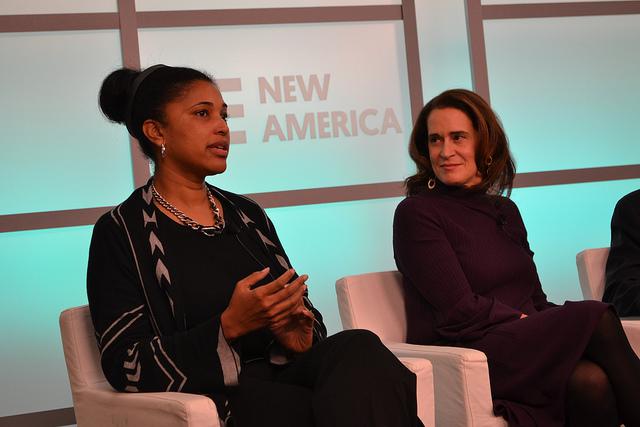In vitro fertilization was originally intended to help a very specific young, married, and female demographic to conceive. But a lot has changed since Louise Brown, the first test tube baby, was born in 1978. The explosion of single mothers and same-sex parents using the procedure has attracted a lot of attention, but society also needs to grapple with the questions of control, regulation, and access that other emerging reproductive technologies could raise. From pre-implantation genetic screening to exo-wombs, these changes could even evolve our most basic notions of family and society.
A first step may be agreeing to talk about this possible future at all. The highly personal nature of reproductive science and technology makes it a difficult topic to discuss and legislate, according to speakers at a Future Tense event on the future of reproduction in Washington, D.C., last week. After all, we’re not talking about hip replacement surgery; this is our future children and grandchildren. As Dieter Egli, a senior research fellow at the New York Stem Cell Foundation, put it: “When we touch the egg, we feel like we are doing something to the human species.”
This squeamishness can also mask the fact that there is a ton of money splashing around in assisted reproduction. Debora Spar, the president of Barnard College and author of The Baby Business: How Money, Science and Politics Drive the Commerce of Conception, told the audience, “This is the only business ever where people don’t talk about money. And yet huge amounts of money are changing hands.” Just look at how we call it “egg donation,” she pointed out—though “donors” receive thousands for their services.
This money can also muddy the ethical waters. Marcy Darnovsky, executive director of the Center for Genetics and Society, suggested that a conflict of interest exists when a doctor takes an egg (a complicated and often risky medical procedure) from a healthy young woman for a paying client. Apple and Facebook’s announcement earlier this year that they would cover egg freezing procedures for their female employees is another potentially fraught development for the industry. “Egg freezing is a whole new market for the fertility industry, and commercial pressures do come to bear,” Darnovsky added.
High prices also mean that reproductive technology is an area particularly prone to inequities. Though “infertility crosses all lines,” as Spar characterized it, the cost of IVF and other methods can make them prohibitive for less affluent infertile families.
Despite the industry’s ethical and commercial issues, it’s still not clear just how involved the government should be. Many panelists expressed concern about the lack of regulation of new reproductive technologies, while others suggested that the government should stay out of decisions between families and their doctors. Still, all agreed that the United States regulates the industry far less than other Western countries. “Here, for whatever reason, and I think it’s political and religious, the government took a back seat in the field of assisted reproduction,” Evan Snyder, director of the Sanford-Burnham Medical Research Institute’s Program in Stem Cell and Regenerative Biology, said. “And it stood them into good stead until the stem cell debate.”
It’s also difficult to pinpoint who, exactly, would take up the mantle in the fight for regulation. “The industry doesn’t want it. … The parents who are successful [with IVF] don’t want to see themselves as infertile,” Spar said. “There’s no natural constituency.”
Ultimately, these technologies, their regulation (or lack thereof), and their effect on society cannot be considered in a vacuum. After all, as Christine Rosen, senior editor at the New Atlantis, pointed out, the history of eugenics in America is tragic, and not particularly distant. California prisons were reportedly sterilizing female inmates without approval as recently as 2010, for example. We need to be vigilant and aware of mission creep, she suggested, especially for technologies that begin to stray into genetic selection. Consider a controversial new procedure, not yet approved by the FDA, which uses the reproductive material of three people to prevent the inheritance of mitochondrial disease. Every parent wants their children to be healthy, but there are still concerns about the slippery slope of beginning to alter people’s inherited characteristics. “They are very powerful technologies. They have implications for us personally, they have implications for our families,” Darnovsy said. “And larger implications of social justice and human rights.”
In the end, it seems emerging reproductive technologies will continue to bring unpredictable social change and challenging ethical questions. Only one thing is certain—we’ll struggle to keep up. As Spar put it, “Technology will always move faster than social norms, and both will move faster than the law.”
Visit the New America website to watch the event in full or to view individual panels.
